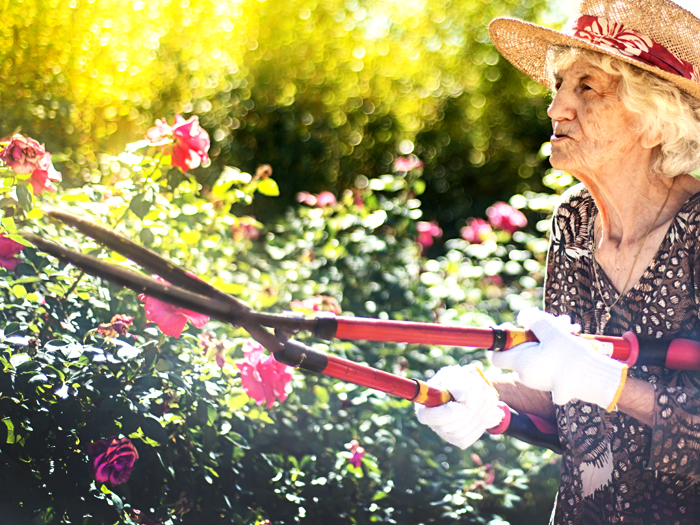10 Simple Ways to Beat Seasonal Allergies
Yes, you can experience spring without constantly itchy eyes and a runny nose. Here’s how.

Spring is here: April showers, May sneezes. But you don’t have to fall victim to seasonal allergies. How so?
“Have an allergy action plan,” says Clifford Bassett, M.D., a clinical assistant professor at New York University School of Medicine. Follow his 10 simple rules to allergy-proof your life.
Rule #1: Take Allergy Meds Before You Need Them
Don’t wait for itchy eyes and a runny nose to ruin your day. Ask your doctor as soon as possible about preventing allergy symptoms before they start. Taking over-the-counter and prescription medicines, such as antihistamines, now can help you avoid or limit symptoms later, Dr. Bassett says.
Rule #2: Spend Your Mornings Inside
Pollen comes from trees, flowers, and weeds, so it’s hard to avoid—even if you live in an urban area. Check your local news reports for the day’s pollen count, and stay indoors when it’s especially high (levels are usually described simply as low, moderate, or high).
Pollen counts generally peak in the middle of the morning and start to dip in the middle of the afternoon. So if you want to fit in some outdoor time, early morning or evening are your best options.
Rule #3: Shield Yourself with a Hat and Sunglasses
On windy days, pollen can travel up to 500 miles. Create a barrier by wearing a hat and sunglasses. The larger the better, Dr. Bassett says. You’ll just want to wipe your glasses clean when you go indoors.
Rule #4: Go Easy on the Hair Products
Hair gels, sprays, and waxes may help your style stay put, but they can make allergies worse. Why? Because pollen clings to these sticky products. When you lie down at night, you’ll transfer any pollen to your pillow. “Then you’re in a pollen bath,” Dr. Bassett says. Try to limit hair product use, or take a shower after you’ve been outdoors.
Rule #5: Tackle Indoor Allergy Triggers
Pollen is king when it comes to outdoor allergies, but other common triggers may be lurking in your home, including dust mites, pet dander, and mold. Keeping your house clean can help, as well as washing bedding in hot water weekly.
More expert-approved strategies: Consider using mattress and pillow protectors; keep pets out of the bedroom and off furniture; seal leaky pipes; and clean bathrooms regularly to limit indoor mold.
Rule #6: Choose Air-Purifying Houseplants
If you have allergies, you may be sensitive to certain plants. Choose fragrance-free flowers, such as orchids or calla lilies, to decorate your home. Or pick an attractive houseplant that also naturally purifies the air. Bamboo, aloe, and snake plants are all good options.
Rule #7: Keep Stress Levels in Check
“When you reduce stress, you can reduce allergy symptoms,” Dr. Bassett says. Stress doesn’t cause allergies, but it can make symptoms worse. The next time you feel stressed, try this simple breathing exercise: Sit in a comfortable position. Take a deep breath, expanding your belly. Pause, exhale slowly to the count of five. Repeat six to 10 times.
Deep breathing, like the practice above, has been shown to lower levels of cortisol, the stress hormone, and trigger a relaxation response in your body. Listening to calm music or spending time with loved ones are also proven ways to relieve stress.
Subscribe to our newsletter
It's quick and easy. You could be one of the 13 million people who are eligible.
Already a member? Click to discover our 15,000+ participating locations.
Follow Us
Rule #8: Eat Allergy-Fighting Foods
Onions, berries, and apples contain quercetin, an antioxidant that may have anti-allergy properties, early studies show. “The jury is still out whether there is such a thing as an anti-allergy diet,” Dr. Bassett says. But eating nutritious foods can help you stay healthy overall.
And don’t forget hydration. Drinking plenty of liquids can help thin mucus and relieve congestion.
Rule #9: Identify Your Personal Triggers
Some people are most bothered by pollen, and others struggle more with dust mites or pet dander. Learn your triggers by recording your symptoms. Then take steps to avoid them.
For example, if pollen sets off your symptoms, be sure to wear a hat and sunglasses outside, and shower before getting in bed. If you can’t find relief, talk to your doctor or an allergist.
Rule #10: Prepare an Allergy Response Kit
Keep a bag of allergy flare-up essentials in your home and car. Stock it with tissues, saline nasal spray, over-the-counter allergy medicine, a hat, sunglasses, and face wash or cleansing wipes, Dr. Bassett says. If your doctor has prescribed any emergency allergy medicine, be especially sure to carry and use it as directed. It may sound a little extreme, but you’ll quickly realize it’s worth it!





